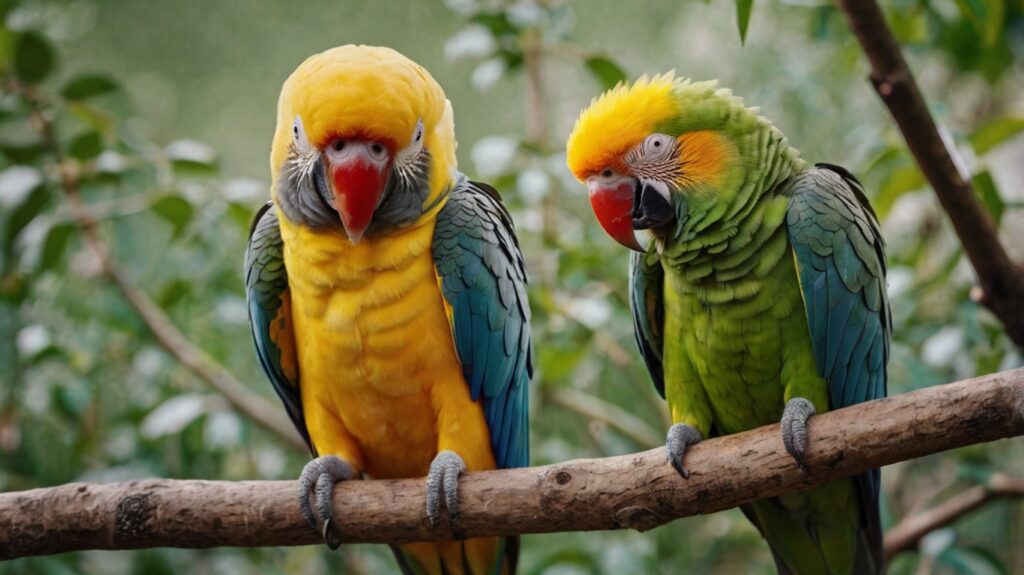Table of Contents
- Introduction
- Factors to Consider Before Choosing a Parrot
- Best Beginner Parrots for Apartments
- Budgerigar (Budgie)
- Cockatiel
- Lovebird
- Parrotlet
- Green-Cheeked Conure
- Caring for Your Apartment Parrot
- FAQs
- Conclusion
Introduction
Choosing the best beginner parrots for apartment living requires careful consideration. Not all parrots adapt well to small spaces, and some can be noisy, disturbing neighbors. Fortunately, several species are quiet, low-maintenance, and perfect for first-time bird owners. This guide covers the top beginner-friendly parrots that thrive in apartments while providing essential care tips.

Factors to Consider Before Choosing a Parrot
Before selecting a parrot, evaluate these key factors:
- Noise Level – Some parrots scream frequently, which may violate apartment noise policies.
- Size – Smaller birds generally need less space.
- Maintenance – Beginners should opt for low-maintenance species.
- Lifespan – Parrots live long; ensure you’re ready for a long-term commitment.
- Social Needs – Some parrots require constant interaction.
Best Beginner Parrots for Apartments
1. Budgerigar (Budgie)
- Size: Small (6-8 inches)
- Noise Level: Low to moderate
- Lifespan: 5-10 years
- Temperament: Friendly, playful, easy to train
- Why They’re Great: Budgies are quiet, affordable, and adapt well to apartment life.
2. Cockatiel
- Size: Small to medium (12-14 inches)
- Noise Level: Moderate (whistles, not screams)
- Lifespan: 15-20 years
- Temperament: Affectionate, social, gentle
- Why They’re Great: Cockatiels are less noisy than larger parrots and bond well with owners.
3. Lovebird
- Size: Small (5-7 inches)
- Noise Level: Moderate (chirpy but not overly loud)
- Lifespan: 10-15 years
- Temperament: Playful, energetic, can be territorial
- Why They’re Great: Lovebirds are compact and entertaining but need socialization.
4. Parrotlet
- Size: Tiny (4-5 inches)
- Noise Level: Low (soft chirps)
- Lifespan: 10-15 years
- Temperament: Bold, intelligent, can be feisty
- Why They’re Great: Their small size and quiet nature make them ideal for apartments.
5. Green-Cheeked Conure
- Size: Small (10 inches)
- Noise Level: Moderate (quieter than other conures)
- Lifespan: 15-20 years
- Temperament: Playful, affectionate, clownish
- Why They’re Great: They’re less noisy than larger conures and adapt well to indoor living.
Caring for Your Apartment Parrot
To keep your parrot happy in an apartment:
- Provide a spacious cage with toys and perches.
- Maintain a consistent routine (feeding, playtime, sleep).
- Minimize loud noises to prevent stress.
- Socialize daily to prevent boredom.
- Keep the cage clean to avoid odors and health issues.
FAQs
1. What is the quietest parrot for an apartment?
Parrotlets and budgies are among the quietest, making them great for apartments.
2. Can parrots be left alone during the workday?
Yes, but they need interactive toys and at least 2-3 hours of daily socialization.
3. Do parrots need a lot of space?
Smaller species like budgies and parrotlets do well in compact spaces, but they still need room to fly.
4. Are lovebirds good for beginners?
Yes, but they can be nippy if not properly socialized.
5. How do I reduce parrot noise in an apartment?
- Keep them engaged with toys.
- Cover the cage at night.
- Train them to stay calm.
Conclusion
Choosing the best beginner parrots for apartment living ensures a harmonious environment for both you and your bird. Species like budgies, cockatiels, and parrotlets are quiet, low-maintenance, and perfect for small spaces. By understanding their needs and providing proper care, you can enjoy a happy, long-lasting companionship with your feathered friend.
